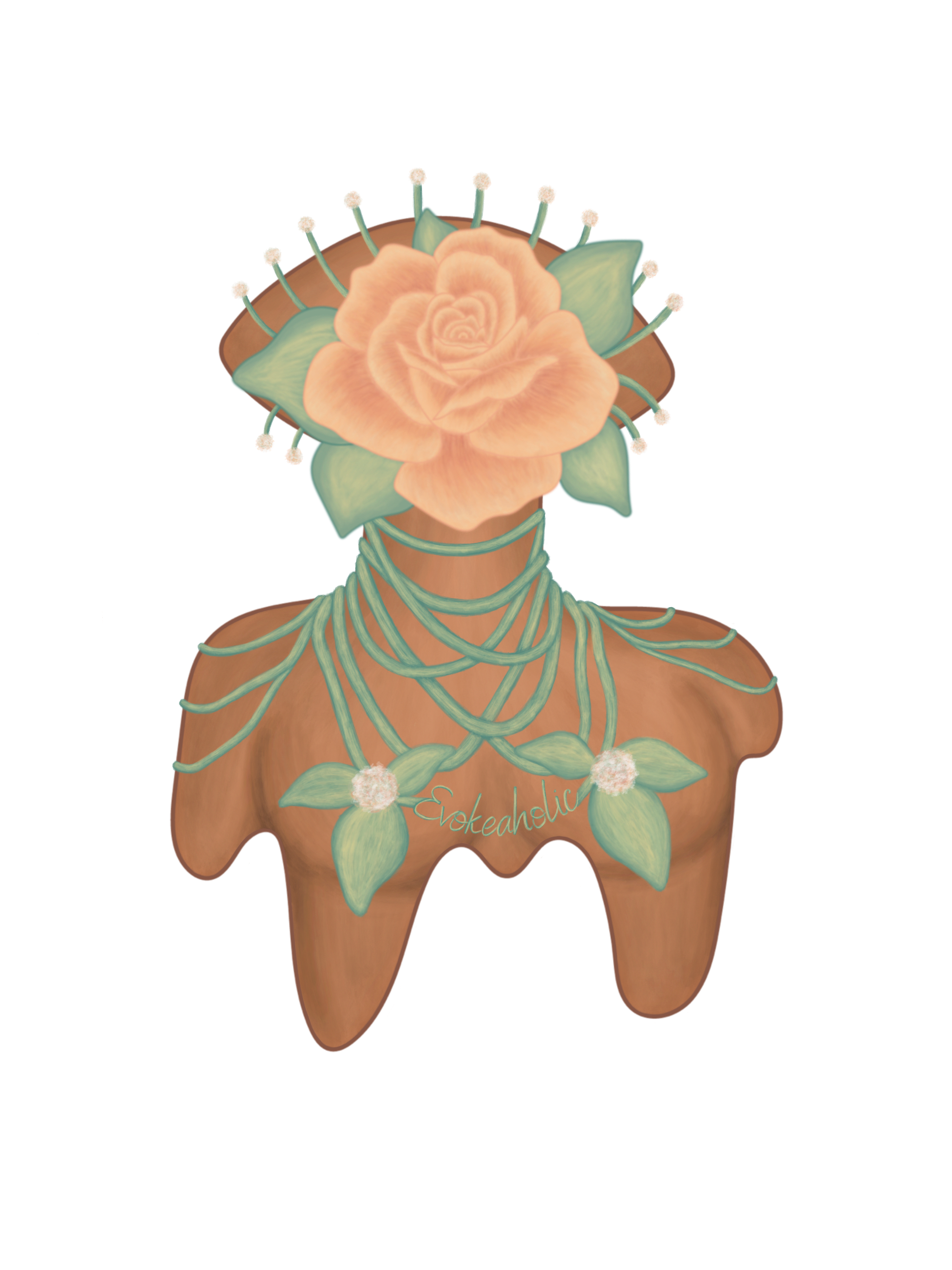For the emerging art lover who wants to explore a new medium; but look like a professional in the process.
Starting anything new can feel daunting, and we can often procrastinate because we want to get it just right from the start. Exploring art should be a joyous and relaxing process. Allow me to take some pressure off and share my tips to get you on the right path to finding your inner artist!

Never underestimate the power of a reference photo. Reference photos can serve as a guiding tool to help you establish proportions, texture, lighting, and subjects. You can use photographs from your phone gallery or explore the world around you to gain inspiration for your next piece.
Although reference photos can serve as a strong foundation, allow yourself space to interpret the images how you wish. For instance, I used the picture of me visiting the Grand Canyon as my reference photo for my surreal piece, “Unstitch Me.” You can use the photograph in many ways. The reference photo can inform the color palette, proportions, highlights, and shadows. It is up to you to give it a new life through your eyes!

The way my life changed when I decided to try out make-up brushes to blend my paintings! It has completely changed the quality of my pieces. Not only does it create the perfect base for a makeup slay, but your painting baybay!
I often reach for makeup brushes much more frequently than a standard paintbrush. A foundation brush is a perfect size to cover backgrounds and ensure you layer on a full-coverage base. I use circular movements to avoid paint streaks. This size of the makeup brush; allows for a smooth blending technique that does not leave white spots. Small eye brushes are perfect for precise, detailed work. My go-to brush brands are Real Techniques, Elf, and Eco-Tools. If you want to look like a professional from the beginning, you don’t want to skip this step!

You definitely have options when selecting your paint medium; pick the medium that calls out to you most. Not sure where to start? I’ve found watching TikTok and YouTube Painting videos to be the most helpful resources when learning a new skill. You can check-out my in-depth video titled; “Top 5 Acrylic Paint Brand Recommendations!” HERE.
Acrylic paint is the most beginner friendly medium. It gives you the flexibility to layer on color without having to wait on it to dry. It is the paint we’ve used since we were in elementary school. There is a sense of nostalgia and familiarity with acrylics for me.
Picking your paint medium can be a personal experience or a spontaneous exploration. You get to decide! Choosing your medium can have a profound statement on; how you want to express your vision. If you are not enjoying the first medium, you can either; try a new one or combine it with another medium to create your signature style. Give yourself space to play!

I don’t know what I was doing with my life before incorporating mixing mediums into my process. It makes your life a million times easier! Mixing mediums help improve the consistency of the paints allowing them to glide across the canvas more fluidly.
Slowing down the drying time of your paint; can be especially helpful for heavy-body acrylics. It can save you from wasting your paint and drying out before you have completed your painting session. My absolute favorite mixing medium is the Golden brand “Retarder” additive. It goes a long way and has made blending a dream. The quality of my paintings has gone up tremendously.

Three Types of Canvases:
The fabric used in most canvases is either linen or cotton due to its quality of surface and durability.
- An oil canvas is intended solely for oil paint.
- Absorbent canvases are intended for tempera.
- Universal canvases are suitable for both oil paint and acrylic paint.
Before I bring a vision to life, I evaluate how my story would benefit from intentionally selecting my canvas size. The size of a canvas can aid in communicating a non-verbal story to the overall piece. For example, my Solitude Collection is all painted on 20” x 20” canvases. I chose this size to highlight the feeling of being trapped or stuck in my circumstances.
The vast amount of shapes and sizes available can help subconsciously communicate how you want the viewer to feel. It is another layer to connecting with your viewer. A chance to dig deeper and become intentional with your art from the start!
Comment Below
What tips and tricks do you have for beginner painters? Let’s connect!
If you enjoyed this post be sure to click the SHARE button!
Click to read “Latina Enough” Blog HERE

